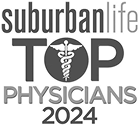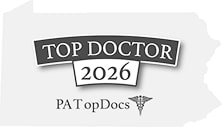Stem Cell Therapy
Stem Cell Therapy is one of the most advanced regenerative treatments available, designed to repair, rebuild, and restore damaged tissues at the cellular level. Using your body’s own stem cells or carefully selected biologic sources, we target areas of injury or degeneration to stimulate new tissue growth and reduce inflammation. This powerful therapy supports long-term healing for joint pain, tendon injuries, and degenerative conditions without surgery. At Meeting Point Health, Stem Cell Therapy is part of our comprehensive regenerative approach—helping your body heal itself naturally and effectively.
What is Stem Cell Therapy?
Stem cell therapy is a type of regenerative treatments used in medicine that can help improve the healing of orthopedic injuries, such as osteoarthritis or tendonitis. Stem cells are undifferentiated cells that have the ability to become specific and specialized tissue where they are needed.
Where do Stem Cells come from?
For orthopedic use, stem cells can be autologous (auto means self) or allogeneic (allo means other.) Autologous sources of stem cells come from the patient’s bone marrow or adipose tissue. Allogeneic stem cells are harvested from various sources, such as amniotic fluid, placental tissue, umbilical cord products, and Wharton’s jelly, which are collected during childbirth from healthy donors. Once collected, these materials undergo a series of purification processes to isolate and concentrate the stem cells.
How are allogeneic stem cells harvested?
The purification process typically involves steps such as filtration, centrifugation, and/or enzymatic digestion to separate the desired stem cells from other cellular components and debris. These techniques help ensure that the final product contains a high concentration of viable and functional stem cells. After purification, the stem cells may undergo further processing, such as cryopreservation, to maintain their viability and potency for future use. This process involves freezing the cells at very low temperatures to prevent cellular damage and maintain their therapeutic properties until they are needed for transplantation or research. Overall, the harvesting and purification of allogeneic stem cells require careful handling and adherence to strict quality control measures to ensure the safety and efficacy of the final product for therapeutic applications.
Types of Stem Cell Therapy
Amniotic Fluid Stem Cells
Amniotic stem cell therapy utilizes the growth factors and stem cells found within the clear amniotic fluid that surrounds a growing fetus in the uterus during pregnancy. This technique is safe and can be used to treat numerous health conditions.
Placental Matrix Derived Stem Cell
Placental tissue matrix stem cells are derived from amniotic tissues and are used to reduce inflammation, minimize scar tissue, and support the healing of soft tissue in areas of injury.
Umbilical Cord Products
Cord blood stem cells can also be collected from the umbilical cord and placenta after a baby is born. This source is rich in blood cell precursors and is often used to treat immune deficiencies, various types of cancer, and certain genetic disorders.
Exosomes
Exosomes are important carrier vesicles that are generated by all types of cells and are responsible for communication between cells. Exosomes are a vital aspect of cell biology and carry growth factors, nucleic acids, proteins, lipids, and metabolites, which travel through the body and are released into the blood to aid in cell signaling.
Wharton’s Jelly
Wharton’s jelly stem cells (WJSCs) are a type of mesenchymal stem cell (MSC) found in the gelatinous substance within the umbilical cord, known as Wharton’s jelly. These stem cells are considered valuable because they possess characteristics similar to other MSCs, including the ability to differentiate into various cell types and to modulate immune responses. They exhibit properties such as self-renewal and multipotency, meaning they can give rise to different cell types like bone, cartilage, and fat cells. Additionally, they have low immunogenicity, making them suitable for injection or infusion.
Orthopedic Conditions Treated by Stem Cell Therapy in Philadelphia
At Meeting Point Health, we take a comprehensive and personalized approach to care. Stem cell therapy can be a beneficial form of regenerative medicine for numerous orthopedic conditions and injuries. Below are some of the most common indications for stem cell therapy.
Arthritic Joints
Arthritis is inflammation of the joint, where two bones are connected. This condition causes joint stiffness, pain, and swelling, which limits the individual’s range of motion and physical activity.
Sports Injuries
Sports injuries can be acute or chronic in nature and vary in severity, method of injury, and expected healing process. Injuries can be caused by long periods of overuse with activity or sudden injury with direct stress or force.
Tendinopathies
There are many conditions involving tendons or the structure that helps to connect your muscles to your bones. Tendinopathies are a response to overuse and result in pain and inflammation of the specific tendon.
Non-Union Fractures
The term non-union describes any fracture that has failed to heal after an extended period of time, likely due to inadequate stability or blood flow to the area. The treatments for this type of injury are limited and often include surgery, bone grafting, and immobilization.
Meniscal Tear
A tear to the meniscus is typically the result of forceful rotation or twisting of the knee, sometimes resulting in serious joint pain but always threatening the integrity of the musculoskeletal system. There are different types and severity of tears, with some able to heal on their own and some requiring treatments for proper healing.
Degenerative Disc Disease
Spinal discs act as cushions between vertebrae in the spine. As we age, the spinal disks go through normal wear and tear, get thinner, and may even develop small tears, resulting in degenerative disk disease. The most common symptom is pain that varies in location, severity, and with certain movements.
Osteonecrosis or Avascular Necrosis
Osteonecrosis or avascular necrosis is caused by disrupted blood flow to the bone, resulting in the death of the bone tissue. This will eventually result in the bone’s breakdown and the joint’s collapse. This can occur in any large joint but is most common in the shoulder and hip.
How does stem cell therapy work?
Stem cells are also known as mesenchymal stem cells and have the unique property of being able to develop into different types of cells. When they are injected into areas of injury, stem cells help to accelerate the healing process by regenerating the key components necessary to restore function to the joint.
How to prepare for stem cell therapy?
It is important to properly prepare your body before undergoing stem cell therapy. One week before your procedure, you must avoid taking any NSAID medications, including Motrin, Advil, or Aleve. In the days leading up to your procedure, drink plenty of water, preferably 64 oz per day, to ensure adequate hydration.
What is post-procedure recovery like?
The average recovery time post-procedure can dramatically differ depending on the condition being treated and the patient’s underlying health status. Most patients will experience minimal downtime after the procedure and may return to work within a day or two, depending on their occupation.
Patients should expect to limit strenuous activity or exercise for the few weeks following the procedure. In addition, patients should avoid physical manipulation of the joint or area of injection.








